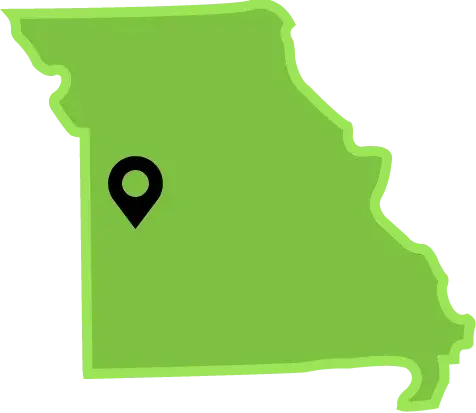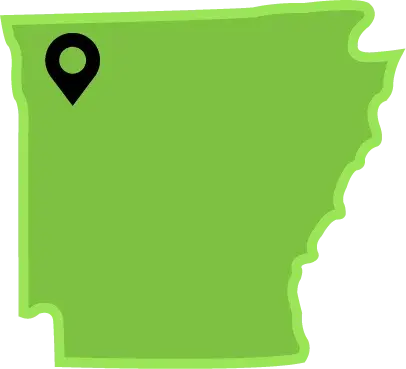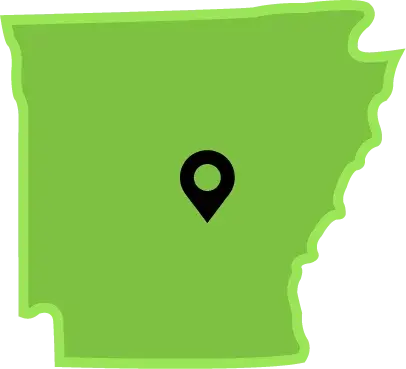
Human Resources (HR) is an essential part of any organization, but the field comes with its own unique language – one often filled with acronyms that can leave even the savviest professionals scratching their heads. From compliance terms like FLSA and COBRA to technology abbreviations like ATS and HCM, understanding these acronyms is key to navigating the HR landscape effectively.
This ebook is designed to help you decode the world of HR acronyms, providing simple explanations and practical examples to make them easier to understand. Whether you’re an HR professional looking to brush up on key terms, a business owner trying to navigate the complexities of workforce management, or an employee wanting to understand the policies that affect you, this guide is for you.
With this resource, you’ll gain clarity, confidence, and a better understanding of the terms that shape HR processes and decisions. Let’s break down the jargon and turn those acronyms into actionable knowledge!
To help you get started, we’ve created this guide. These are some of the most common acronyms, terms, and definitions to keep on your radar:
401(k) - Employer-Sponsored Retirement Savings Plan
401(k) investment allows employees to save and invest for retirement, often with employer contributions.
ACA - Affordable Care Act
The Affordable Care Act is also known as Obamacare and is an insurance marketplace (Healthcare.gov) designed to offer affordable policies to the uninsured. It also prevents insurance companies from denying coverage due to pre-existing conditions.
ACr - Application Completion Revenue
This refers to the income generated when a user successfully completes an application process, typically in contexts like financial services, job platforms, or subscription-based services. It represents the final step in converting a lead into a paying customer or user.
ADA - Americans with Disability Act
This is a civil rights law that monitors and prohibits discrimination against people with disabilities. These disabilities include transportation, employment, public accommodations, access to state and local government services and programs, and communications.
Ats - Applicant tracking system
This is software that helps organizations manage and streamline the hiring process by tracking, organizing, and sorting job applications.
CHIP - Children’s Health Insurance Program
CHIP is a low-cost health insurance program for children in families that make too much to qualify for Medicaid. Each state operates differently, but some states cover pregnant women.
CHRO - Chief Human Resources Officer
This is the head of the human resources department and is considered the top management executive in charge of employees.
Cobra - Consolidated Omnibus Budget Reconciliation Act
This is a U.S. law that allows employees and their families to continue health insurance coverage after losing their job or experiencing certain other qualifying events.
Cola - Cost of living adjustment
This refers to an increase in income, typically wages or benefits, to offset inflation and maintain purchasing power.
Dei - diversity, equity, & inclusion
DEI refers to fostering a workplace or community that values diverse perspectives, ensures fair treatment and access to opportunities, and creates an inclusive environment where everyone feels respected and valued.
DOA - Date of Accident
This is the date when an accident occurred or the date of first exposure. In most cases, this is the date that will go on the claim form.
DOI - Date of Injury
This is the date of the accident when the injury became known, or the date when the employee sought medical attention for the injury. There are many instances when an employee may have been injured but didn’t seek care until it became an issue.
DOl - Department of labor
The Department of Labor is a government agency responsible for overseeing workplace rights, employment laws, and labor standards to protect workers and promote fair working conditions.Eap - Employee assistance program
This is a workplace benefit offering confidential support services to employees, including counseling, mental health resources, and assistance with personal or work-related challenges.
EEO - Equal Employment Opportunity
This ensures all individuals have fair access to jobs, benefits, and promotions, regardless of race, gender, age, religion, disability, or other protected characteristics.
EEOC - Equal Employment Opportunity Commission
The EEOC enforces federal laws that protect employees against discrimination and other laws. They investigate employers who have complaints of discrimination within their workplaces.
Eft - Electronic funds transfer
This is a digital transfer of money between accounts without the need for paper checks or cash.
eic - earned income credit
This is a refundable tax credit for low to moderate-income workers, designed to reduce the tax burden and encourage employment.
elc - employee life cycle
This refers to the stages an employee experiences during their time with an organization, from recruitment and onboarding to development, retention, and eventual offboarding. It represents the complete journey of an employee within a company.
eob - explanation of benefits
This is a summary from your insurance provider detailing what medical services were covered, the costs, and what you may owe.
EOE - Equal Opportunity Employer
This is an employer that agrees not to discriminate against their employees or applicants due to race, color, sex, religion, national origin, disability, age, or genetic information.
er - employee relations
This refers to the management of relationships between employers and employees, focusing on fostering a positive, productive workplace through communication, conflict resolution, and engagement initiatives.
ERISA - Employee Retirement Income Security Act
This is a federal law that governs how employers give benefit plans to their employees and protect their retirement savings.
ESBA - Employee Benefits Security Administration
This is a part of the U.S. Department of Labor that provides information and assistance on employer-sponsored health benefits and retirement benefit plans.
esop - employee stock ownership plan
This is a program that gives employees ownership interest in the company, typically through shares of stock.
fica - Federal Insurance Contributions Act
This is a U.S. law requiring employers and employees to contribute to Social Security and Medicare through payroll taxes.
FLSA - Fair Labor Standards Act
The FLSA establishes overtime pay, minimum wages, recordkeeping, and youth development standards for employees in the private sector, and federal, state, and local governments.
fmla - family & medical leave act
This is a U.S. law that allows eligible employees to take unpaid, job-protected leave for specific family or medical reasons, such as the birth of a child, a serious health condition, or caring for a sick family member.
FSA - Flexible Spending Account
This is a tax-free account hosted by your employer to pay for out-of-pocket health care expenses. The individual decides how much they want to contribute, and the money is withdrawn from their paycheck before taxes.
futa - federal unemployment tax act
This is a U.S. law that requires employers to pay a payroll tax, which funds unemployment benefits for workers who lose their jobs.
FWC - Fair Work Commission
This is an independent national workplace relations tribunal that maintains employment and wage standards and assists in resolving issues in the workplace.
GHP - Group Health Plan
This is a welfare benefits plan offered by an employer, union, or association to their working members. This plan usually provides medical coverage and other benefits for participants and their dependents.
gtl - group term life insurance
This provides life insurance coverage to a group of people, typically employees, under a single policy. Coverage is usually offered as a workplace benefit.
hcm - human capital management
This refers to the strategic approach to recruiting, managing, developing, and optimizing employees to maximize their value and contribution to an organization.
hippa - Health Insurance Portability & Accountability Act
This is a U.S. law that protects patient health information and ensures privacy and security in healthcare.
HR - Human Resources
This department manages the employee life cycle, including recruitment, hiring, training, development, management, and compensation.
hra - health reimbursement arrangement
This is an employer-funded benefit that reimburses employees for qualified medical expenses and health insurance premiums tax-free.
hrbp - human resources business partner
This is an HR professional who works closely with an organization's leadership to align HR strategies with business goals, focusing on employee performance, development, and organizational success.
hris - human resources information system
This is software that helps manage HR tasks like employee data, payroll, recruitment, and benefits in one centralized platform.
HRMS - Human Resource Management System
This is a suite of software applications that helps manage the human resource function and its various processes.
hsa - health savings account
This is a tax-advantaged savings account designed to help individuals with high-deductible health plans save for medical expenses.
irs - internal revenue service
This is the U.S. government agency responsible for collecting taxes and enforcing tax laws.
IW – Injured Worker
Individuals who have been injured and are likely unable to perform the usual duties of their position.
kpi - key performance indicator
This is a critical indicator of progress toward an intended result. It is a measurable value that demonstrates the effectiveness of how a company achieves its business objectives. Some people overlap KPIs with KSIs.
ksi - key success indicator
This indicator defines the direction of a business, provides important feedback, and helps organize teams, individuals, projects, or the business to optimize performance. Some people overlap KPIs with KSIs.
l&D - learning & development
This refers to the process of enhancing employees' skills, knowledge, and competencies to improve performance and support career growth. It plays a critical role in company hiring by fostering a culture of continuous improvement and preparing employees to meet current and future business needs.
LI - Life Insurance
This is a contract between a person and an insurance company to cover death benefits and payouts to beneficiaries. Although usually offered by an employer, individuals can also purchase policies on their own.
lms - learning management system
This is a platform designed to deliver, track, and manage educational or training content, enabling users to learn online efficiently.
loa - leave of absence
A leave of absence is a temporary period when an employee is allowed to take time off from work, either paid or unpaid, while retaining their position. It is typically granted for personal, medical, or family reasons.
LTD - Long-Term Disability
This is wage replacement coverage that provides financial benefits equating to a portion of an employee’s earnings due to long periods of illness, injury, or an accident.
MERP - Medical Expense Reimbursement Plan
This is a flexible spending account that pays for eligible medical, dental, and vision care expenses not covered by an insurance plan.
nlrb - national labor relations board
This is a U.S. government agency that enforces labor laws related to collective bargaining and workers' rights to organize and unionize.
okr - objectives & key results
This is a goal-setting framework used in HR and business to align teams and track progress. Objectives define what you want to achieve, while key results are specific, measurable outcomes that indicate success in reaching those goals.
opl - optimum productivity level
This is the ideal balance where resources, time, and effort are utilized most efficiently to achieve maximum output without overexertion or waste. It ensures sustainable performance while maintaining quality and minimizing burnout.
OSHA – Occupational Safety and Health Administration
OSHA is a division of the Department of Labor that works to establish safety protection for workers while on the job. They set and enforce standards, and provide employers with outreach education, training, and assistance.
pip - performance improvement plan
This is a structured document outlining specific goals, actions, and timelines to help an employee address performance issues and meet job expectations. It serves as a tool for providing clear guidance and support while monitoring progress.
pte - part-time employee
This is an employee who works fewer hours than a full-time schedule, typically less than 35-40 hours per week, often with flexible or reduced hours.
pto - paid time off
This refers to leave that employees can take while still receiving their regular pay, covering vacations, sick days, or personal time.
roi - return on investment
This measures the profitability of an investment by comparing the return gained to the initial cost.
rpe - revenue per employee
This is a metric that measures the amount of revenue a company generates for each employee. It is calculated by dividing total revenue by the number of employees, providing insight into workforce efficiency and productivity.
SAR - Summary Annual Report
This document is a narrative of the information on the ERISA plan’s IRS Form 5500 that is distributed to all participants. It’s also a statement of the right to receive an annual report.
soh - source of hire
This refers to the specific channel or method through which a candidate learns about or applies for a job, such as job boards, referrals, social media, or recruitment agencies. Tracking this helps organizations understand which sources are most effective in attracting top talent.
sox - sarbanes-oxley act
This is a U.S. federal law enacted in 2002 to improve corporate transparency and prevent fraud by imposing stricter financial reporting and auditing requirements on public companies.
sui - state unemployment insurance
This is a government program that provides temporary financial assistance to workers who have lost their jobs through no fault of their own.
swot - strengths, weaknesses, opportunities, & threats
This is a strategic framework used to evaluate internal strengths and weaknesses, as well as external opportunities and threats, to help organizations make informed decisions.
tm - talent management
This is the strategic process of attracting, developing, and retaining skilled employees to meet an organization's goals. It focuses on maximizing employee potential and aligning their growth with business objectives.
tth - time to hire
This is the total number of days it takes to fill a position, starting from when a job opening is posted to when a candidate accepts the offer. It’s a key metric for evaluating the efficiency of a recruitment process.
w-2 - wage & tax statement
This is a document employers provide to employees detailing their earnings and taxes withheld during the year.
w-4 - employee's withholding certificate
This is a form used by employees to specify tax withholding preferences for their paychecks.
WC - Workers’ Compensation
This is a type of insurance that provides medical care and wages to workers who were injured on the job or while doing work for the job.
Many of these human resource acronyms and abbreviations aren’t commonly used in everyday life but are important and useful to know while in the workplace. Now you can feel confident when speaking, listening to, or reading information with these terms.
Originally published 9/14/22 - Updated 1/30/25








